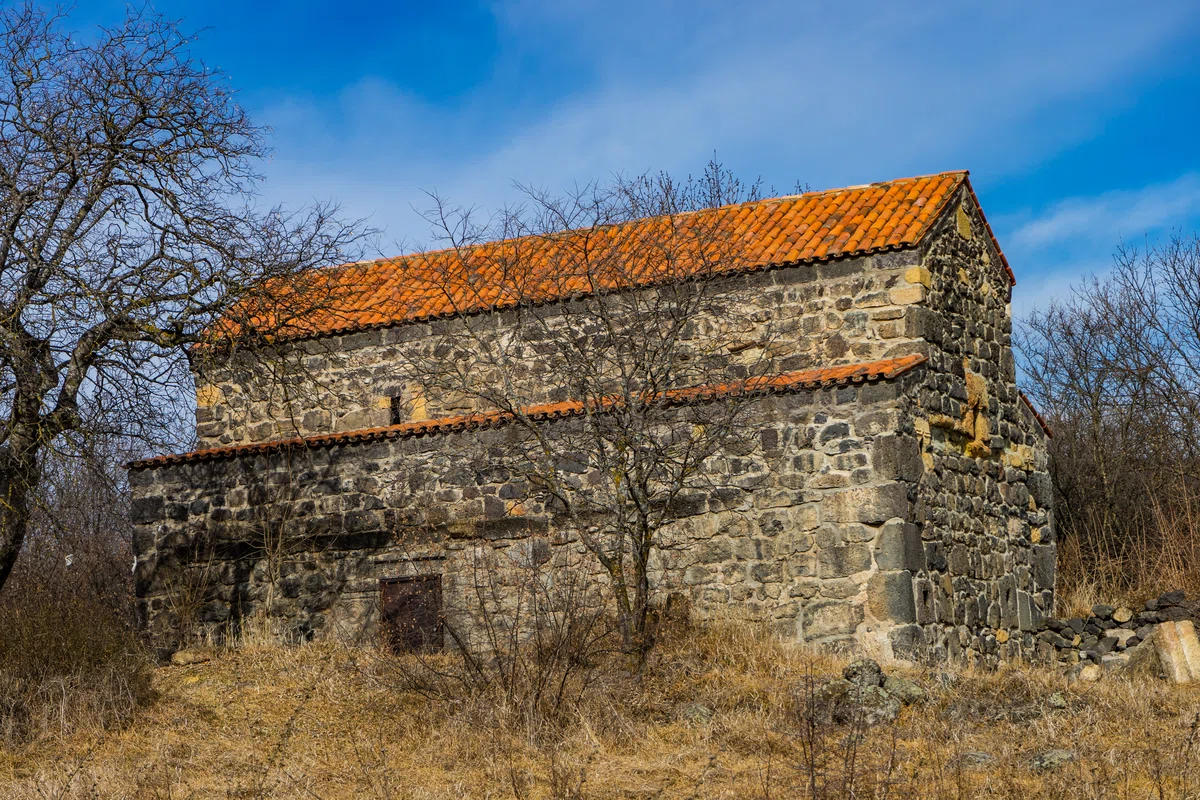
Ancient ruins in Georgia. The disappeared fortresses of Georgia. Kldekari and Samshvilde.
There are many old fortresses and ruined cities in Georgia. Attention should be paid to the fortress city of Samshvilde and the fortress of Kldekari. Samshvilde has preserved only its ruins to this day, and at one time this city was important in the development of trade. Kldekari, too, has brought to us only a small part of her former greatness. By visiting these places, you will be able to touch the history.
Fortress City Samshvilde in historical monuments it is mentioned in connection with the campaign of Alexander the Great in Kartli. The Georgian historian Juansher tells us that Vakhtang Gorgasali's mother, Sagdukht, after the adoption of Christianity, ordered the construction of a church in Samshvilda – Samshvilda Sioni.
One of the oldest and most powerful fortress cities of Samshvilde is located 4 km southeast of the city of Tetritskaro, near the modern village of Samshvilde, at the confluence of the rivers Chivchavi and Khrami (Kcia), on a high rocky peak.
Originally there was an Orbi fortress, which was built, according to legend, by the eponym of the Georgians - the legendary ancestor Kartlos. Since the reign of Parnavaz (IV-II centuries) - the first king of Kartli - Samshvilde It was the center of the Eristavstvo, and then a large and influential city in Southern Georgia, where handicrafts and trade flourished. However, after the invasions of the Mongols, the power of the city came to an end. And in 1440, on March 28, the Saint's Day
On Easter, the Iranian hordes led by Jehan Shah took Samshvilde after a 50-day siege. At the same time, 1,100 Georgians died, After this tragic event, Samshvilde continued to exist only as a fortress. The last battle at its walls took place in 1748 between Irakli II and Abdullah Beg, the son of the king of Kartli Iese (Ali-Kuli Khan), who converted to Islam. Heraclius II won a landslide victory over the enemy. After this event, Samshvilde is hardly mentioned in historical sources. Only the ruins of a once mighty city have survived to this day. It was a triangular fortress, 3 km long and only 400 meters wide. From the west, it was protected by walls 5 meters thick. On the other three sides, the fortress was guarded by natural steep cliffs. The territory of the city was divided into three parts: the citadel (wall thickness - 6 m, height - 12 m), the fenced main fortress, where there were residential houses for representatives of the nobility and clergy, and the area where ordinary residents of the city lived.
The ruins of seven churches have been found on the territory of the former city. Several caves have been carved near the ruins of the city, on both slopes of the Kcia Valley.

Agency State Reserve it was founded in 1965 in order to protect the plants of the extreme eastern borders: eastern spruce and Caucasian fir. In 2007, the reserve was granted the status of a National Park. There are many historical, cultural, and archaeological monuments in the vicinity of the park, including Manglissky Sioni, Samshvilde,Kldekari, Birtvisi and others .
In the Trialeti mountains, on a high watershed ridge, in the southern side of which are the neighborhoods of Tsalka and Manglisi, and in the northern - the valleys of the Tedzma and Tana rivers, a stone cliff stands like a wall. On the top of the cliff, the ruins of the castle of the city of the Georgian feudal lords Bagvashi have been preserved to our time. From here, for centuries, the trade and caravan route of strategic importance, which ran along the foot of the cliff, was guarded and controlled. This way connected Kartli with South Georgia - with Tsalka and Trialeti -and played an important role in the economic life of the country. A passage is cut through the foot of the mountain. This is the reason for the name Kldiskari ("klde" - rock, "kari" - gate).
The fortress of Kldekari was built in the 70s of the IX century by the decree of the feudal lord Lipart I Bagvashi. Because of its location, the fortress was considered one of the most impregnable. A small part of the fortress has survived to us. The unusual location of the fortress, its inaccessibility to it arouse great interest among tourists. And the historical events that unfolded around Kldekari gave rise to many legends.
The Bagvashi family of feudal lords is known in the history of Georgia for its disobedience to the tsarist power. They inflicted great damage to Tsar Bagrat III, who fought for the unification of the Georgian lands, and throughout the tenth century they provided armed resistance to the tsarist troops. Lipart even dared to show disobedience towards David Agmashenebeli. In 1094, David captured Liparta, sent him to Greece and abolished the eristavstvo (principality) Kldekari. In the late Middle Ages, Kldekarskoe no longer existed. Therefore, it is rarely mentioned in historical monuments.
The territory of Kldekari is part of the Algeti National Park.
Everywhere in the country you can come across ancient fortresses and temples. Georgia is an amazing religious country with an ancient history, which has been preserved to this day thanks to the Georgian people. Here, traditions and the memory of ancestors are treated with special trepidation, so many monasteries and churches erected thousands of years ago have survived to this day and are still operating.
Of course, not everything can be preserved in its original form, such as Kldekari and Samshvilde, but the ruins of these fortresses allow us to touch those times closer.
Read more about the Georgian people, their culture and customs in the Madloba catalog. Here you will find articles and reviews of all the attractions, life hacks for the perfect vacation and the latest news about the country. Share your impressions, write comments and get to know Georgia better!













32 comments
Log in to leave a comment